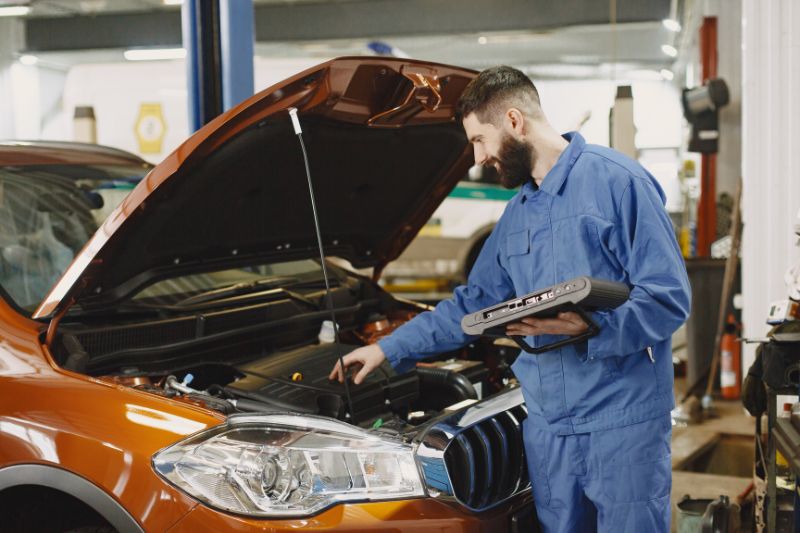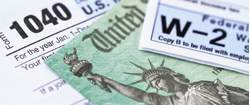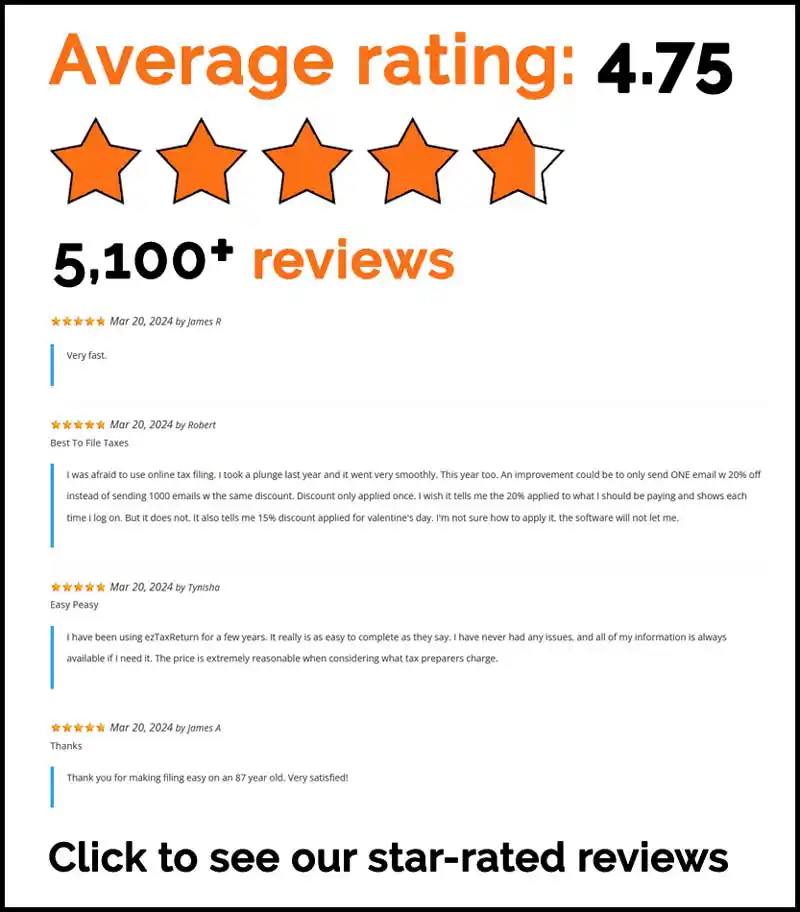Are car repairs tax deductible? If you’re using your vehicle for business purposes, the answer is yes. This article explains who qualifies, which repairs can be deducted, and how to claim these deductions on your taxes.
Key Takeaways
- Car repair tax deductions are primarily available for self-employed individuals, small business owners, and specific government employees using their vehicles for business purposes.
- There are two main methods for deducting car repair expenses: the standard mileage rate, which offers a simplified deduction based on miles driven, and the actual expenses method, requiring detailed tracking of all vehicle-related costs.
- Accurate record-keeping is essential for claiming car repair deductions, including distinguishing between business and personal mileage, and maintaining documentation like receipts and logs.
Who Can Write Off Car Repair Expenses?
Eligibility for car repairs tax deductions includes:
- Self-employed individuals
- Small business owners
- Armed forces reservists
- Certain local government officials
- Certain fee basis government officials
If you’re using your vehicle for business purposes, you can deduct the associated repair costs.
For business owners, the key to unlocking these tax benefits lies in the vehicle’s usage for both business and personal. If the vehicle is used exclusively for business purposes, all associated repair costs can be deducted.
But what if your vehicle serves both personal and business functions? In such cases, only the expenses attributable to business use are deductible. This requires a careful calculation of the percentage of business versus personal use to ensure accurate deductions.
Understanding these eligibility criteria and usage requirements is the first step in maximizing your car repair tax deductions. Aligning your vehicle’s use with tax code requirements allows you to confidently deduct car repairs and reduce your tax bill.
Types of Deductible Car Expenses
Not all car repair expenses are created equal. Deductible car repair costs must be both ordinary and necessary for business use. This means that routine maintenance and repair expenses that keep your vehicle in working condition are fair game for tax deductions. Individuals who use their vehicles for business-related travel can deduct these car repair expenses.
Examples of deductible car repairs include replacing a broken headlight, mending a damaged fender, and fixing a malfunctioning air conditioner. Routine maintenance such as oil changes, windshield wipers, and headlight replacements also qualify as car repairs tax deductible expenses. However, if a vehicle is used for both personal and business purposes, only the expenses attributable to business use can be deducted. Calculating the percentage of business versus personal use is essential for accurate deductions.
Self-employed individuals can claim a wide range of car-related expenses, including repairs, gas, oil, tires, maintenance, registration fees, parking fees, and tolls. By clearly distinguishing between business and personal driving and keeping meticulous records, you can ensure that you take full advantage of all eligible deductions.
Methods for Deducting Car Repairs
When it comes to deducting car repairs, taxpayers have two main methods to choose from: the standard mileage rate and the actual expenses method. Each method has its own set of rules and potential benefits, depending on your specific situation and the car expenses incurred.
The standard mileage rate is a simplified way to account for vehicle expenses, while the actual expenses method requires detailed tracking of every car-related expense. Both methods can be advantageous, but it’s essential to understand which one aligns best with your vehicle’s usage and your overall tax strategy.
Standard Mileage Rate
The standard mileage rate is an easy-to-use method for those who prefer simplicity. For 2025, the IRS allows a deduction of 70 cents per business mile driven. This rate has increased from previous years, reflecting changes in operating costs. For example, in 2024, the rate was 67 cents per mile, and in 2023, it was 65.5 cents per mile.
To calculate your deduction using the standard mileage rate, simply multiply the number of business miles driven by the applicable mileage rate for the year. This method can be particularly beneficial for those who drive a lot for business purposes but don’t want the hassle of tracking every single car expense.
However, it’s crucial to maintain a detailed log of your business miles. This includes recording the date, the purpose of the trip, and the number of miles driven. This documentation is vital for substantiating your mileage deduction in case of an audit.
Actual Expenses Method
The actual expenses method offers another avenue for deducting car repairs, particularly for those willing to put in a bit more effort. This method allows you to deduct the actual costs incurred for operating your vehicle for business purposes. These costs can include fuel, repairs, insurance, and registration fees, but only the portion attributable to business use.
To determine deductible repair costs, you need to calculate the percentage of the vehicle’s use that is for business purposes. For example, if you use your car 70% for business and 30% for personal reasons, you can deduct 70% of the repair costs. This method can result in a more significant deduction if you have high car expenses, but it requires meticulous record-keeping.
In addition to the actual expenses method, you can also deduct parking fees and tolls related to business travel separately. This method can be more beneficial for those with substantial vehicle expenses and the discipline to keep detailed records.
Note: ezTaxReturn only supports the ‘standard mileage rate’ method of determining vehicle expenses.
Record-Keeping for Car Repair Deductions
Accurate record-keeping is the backbone of claiming car repair tax deductions. It helps prevent issues such as audits or penalties when claiming deductions. Eligible individuals should separate business and personal mileage to claim deductions accurately. Maintaining detailed logs of business-related mileage is crucial for claiming vehicle expenses.
Several tools can simplify this process. Apps like Everlance, Hurdlr, MileIQ, MileWiz, and TripLog can help record business-related mileage accurately. These tools automate the tracking process, making it easier to differentiate between personal and business mileage.
For those using the actual expense method, maintaining comprehensive records of all relevant expenses is vital. Keeping receipts and detailed records is necessary to validate claims using this method. Invoices and service records for repairs should be preserved to support your tax deductions.
Utilizing these tools and methods ensures accurate and complete records, making the tax filing process smoother and more efficient.
Reporting Car Repairs on Your Tax Return
When it comes to reporting car repairs on your tax return, the process varies depending on your filing status. Self-employed individuals typically report car repair expenses on Schedule C. This form allows you to list all business expenses, including vehicle repairs, to calculate your net profit or loss. Armed forces reservists and qualified performing artists must use Form 2106 to report car expenses. When you file with ezTaxReturn, we’ll handle all the paperwork for you.
Accurate recordkeeping and mileage tracking are crucial for deducting car repairs. Maintaining records of car repairs and other expenses is necessary to claim deductions. This includes tracking mileage for business and personal trips and keeping receipts for repairs. Detailed record-keeping is crucial for claiming vehicle-related tax deductions. Invoices and receipts must be preserved to support vehicle repair claims.
By following these steps and ensuring that your records are accurate, you can confidently report your car repair expenses on your tax returns and maximize your deductions.
Difference Between Car Repairs and Improvements
Understanding the difference between car repairs and improvements is crucial for accurately claiming tax deductions. Car repairs maintain the vehicle’s condition, while improvements enhance its value or extend its lifespan. For example, replacing a broken headlight is a repair, while installing a new engine is an improvement.
Car repairs related to business use can be deducted, whereas costs for repairs tied to personal use are not eligible for tax deductions. Improvements are not tax deductible but must be depreciated over five years or longer. This means that while you can’t deduct the cost of improvements directly, you can recover the cost over time through depreciation.
Distinguishing between these two types of expenses ensures you claim the correct deductions and avoid any IRS issues.
Summary
Understanding the eligibility criteria, types of deductible expenses, and methods for deducting car repairs can make the process much smoother. Whether you’re using the standard mileage rate or the actual expenses method, accurate record-keeping is essential for maximizing your deductions and ensuring compliance with tax laws.
In summary, knowing the difference between car repairs and improvements, keeping detailed records, and accurately reporting your expenses can significantly impact your tax return. With this knowledge, you can confidently approach tax season, secure in the understanding that you’ve taken full advantage of the car-related deductions available to you. If in doubt, use ezTaxReturn to guide you through the process and help you maximize your tax benefits.
Frequently Asked Questions
Who is eligible to deduct car repair expenses?
You can deduct car repair expenses if you’re self-employed, a small business owner, an armed forces reservist, or a fee-basis government employee. Just make sure you meet those criteria!
What types of car repair expenses are tax-deductible?
You can deduct ordinary and necessary car repair expenses, such as fixing headlights, mending fenders, repairing air conditioning, and routine oil changes. Keep track of those receipts, and you might save some cash come tax time!
How can I choose between the standard mileage rate and the actual expenses method?
Choosing between the standard mileage rate and the actual expenses method comes down to simplicity versus detail. If your vehicle costs are high, tracking actual expenses might save you more, but if you prefer a straightforward approach, the standard mileage rate could be the way to go.
What records do I need to keep for car repair deductions?
To maximize your car repair deductions, keep detailed logs of your business-related mileage and save all receipts for repairs and expenses. Using a mileage tracker app can simplify this process for you.
How do I report car repair expenses on my tax return?
You can report car repair expenses on your tax return by using Schedule C if you’re self-employed, or Form 2106 if you’re an armed forces reservist or qualified performing artist. Just remember, keeping good records and tracking your mileage are key to maximizing your deductions!
The articles and content published on this blog are provided for informational purposes only. The information presented is not intended to be, and should not be taken as, legal, financial, or professional advice. Readers are advised to seek appropriate professional guidance and conduct their own due diligence before making any decisions based on the information provided.




